Map
The Fortress of Verrucole
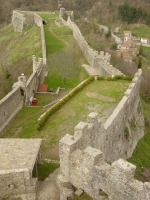
It is one of the most beautiful medieval buildings that we can find in this area.
Cleaned and restored recently, is a point of stopping very impressive, both in daylight hours due to its location in the heart of the Serchio Valley and then to the view it offers, both when illuminated at night becomes the landmark visible from almost all countries in the area.
Very characteristic is the namesake village situated at the foot of the building.
"The fortress", a medieval building, consisted of two separate structures: a quadrangular fortress, and a circular fortress. To get there, take the signs for San Roman where it's easy to get on Verrucole.
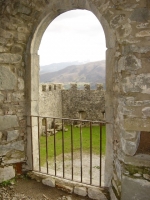
The medieval building was two separate structures: a fortress and a square circle.
It was held by the family of Gerardinghi and later transferred to Lucca in the thirteenth century.
In 1446 became a possession of the Este family that chose a main fortification of the northern part of the province of Garfagnana. At the beginning of the sixteenth century began a period of decline, and just served the solicitation of the Ariosto, Este commission for the restoration. In 1564 the Duke Alfonso of Este commissioned Marco Antonio Pasi, military architect, to adapt to new defensive systems. It was demolished the fortress square, built two large bastions to stay the guns and improved links with the circular fortress, which was also expanded and modernized. In the eight hundred garrison was dismantled.
History details
Traces of ancient settlements in this area consist of numerous Neolithic finds, from a necropolis Ligure (near San Romano), the path of the Roman Via Clodia, but the first written records date back to medieval times.
The territory was divided and disputed between two feudal lordships: the earl of Bacciano, the castle there are no more tracks, and much more powerful Gherardinghi, who had their headquarters in the castle of Verrucole until 1285.
With the decline of feudal reality the area of San Romano became for a short period an independent municipality.
Very soon, the expansion of Lucca in the Garfagnana, in order to control the steps and routes to the north of the upper valley of the Serchio, led to the subjugation of the mighty castle.
In the following centuries Verrucole never peace between the Florentines contended, the Marquis Malaspina and Estensi was often the focus of fierce battles.
The last dates to 1520 when, in possession of Este, was besieged by Fiorentino.
At last the second half of 1500, the dukes of Este consolidated their domination of the valley and it was under their control until the unification of Italy.
Then, the whole history of high Garfagnana passed between the walls, now in ruins, the castle of Verrucole that, thanks to its location on a hill about 600 meters high, overlooking the Alps, the Apennines and most the valley floor.
Its origin is clearly medieval in its ways: it was originally composed of two cores, located at the hill, the 'Round Rock' highest summit in the South and the 'Fortress Square' to the north.
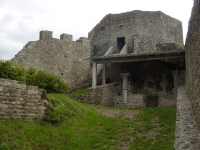
The keep has a south crenellated fence that encloses the courtyard.
Two other curtain embattled north and depart, adapting perfectly to the edge of the cliff surrounding the survey, reaching the opposite end.
Here stood the 'Fortress Square', the nucleus of purely military complex, now completely gone and replaced by two bastions built by the Este family which until the middle of 1600 remained here a keeper of the castle with a garrison with pieces of light artillery.
This part of the castle is also equipped with underground tunnels, used as powder magazines. As mentioned, the two n�cleos joined by two crenellated curtain wall, with the focus of two semicircular towers, loopholes and walkway patrol. The area thus enclosed between the two fortresses, is the military, where there are also other buildings. In the west curtain, opens the only door to the complex, topped by a apparatus to protrude. The apparatus to protrude, in essence, is to lead the embattled parapet to protrude outside the defensive wall.

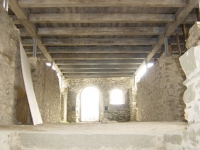
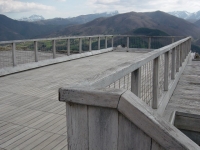

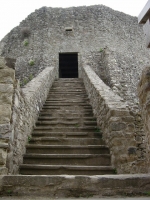
Verrucole the castle was abandoned for several years. Today is free open to the public, after years of careful restoration, which have brought to its ancient scenic beauty.